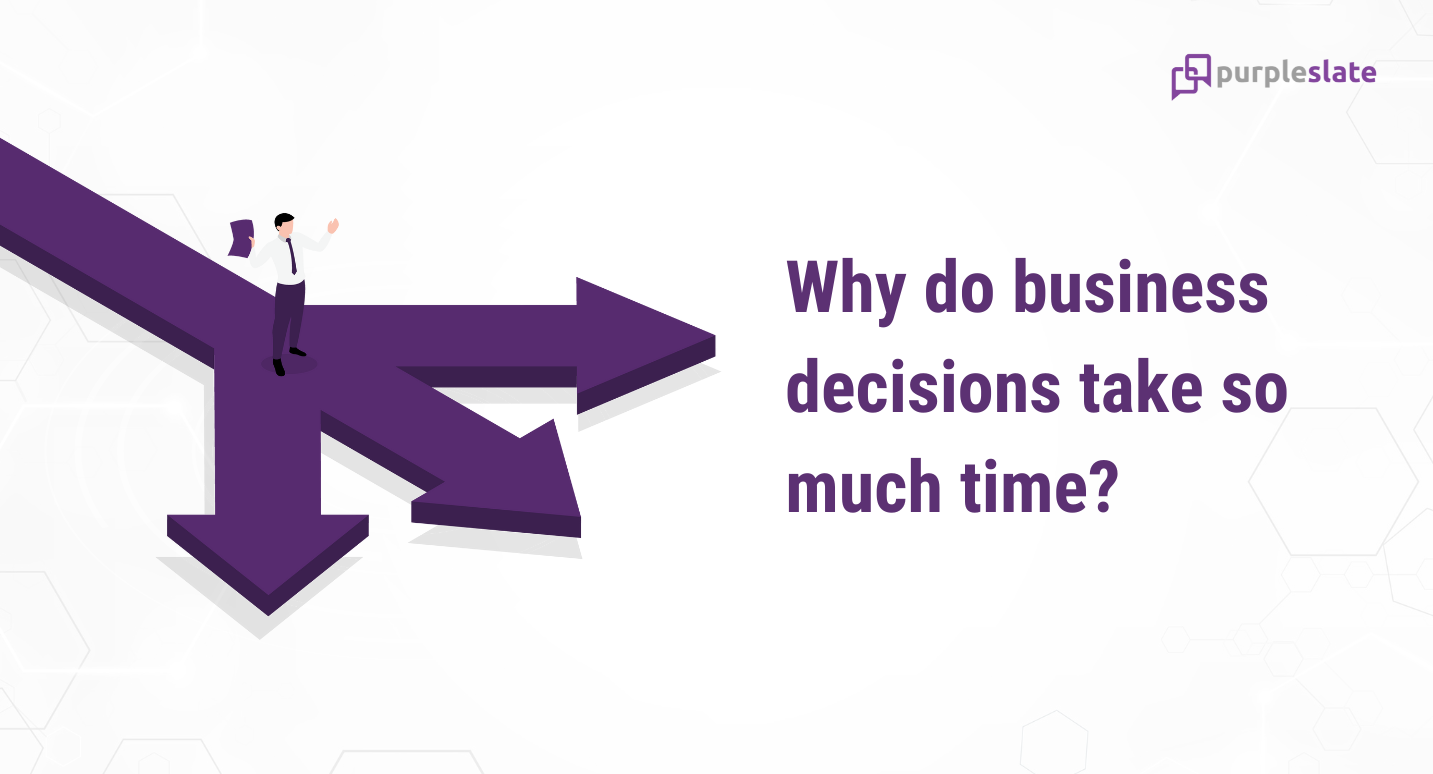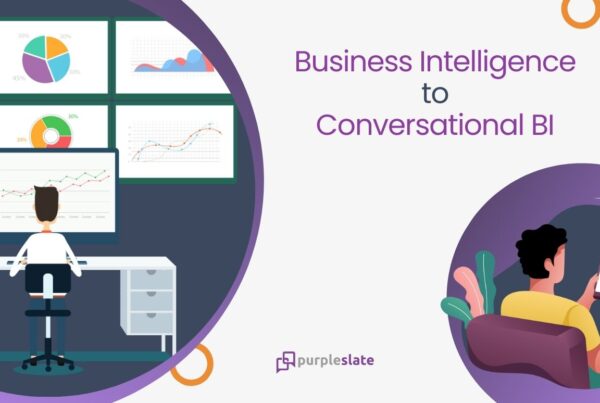
Introduction
“We will miss out on opportunities if we don’t act, especially while taking impactful business decisions”
“The market will pass us by”
“We will lose clients if we don’t offer a quicker turnaround”
These are the typical boardroom discussions in any company from any business domain.
These discussions stress the need for making decisions. Just decisions? Is that tough?
It may be easy for some, but often hard for the rest of the population. Making decisions is often hard, and making the right decisions is even harder. The struggle increases when the right decisions are to be made promptly.
What could be the reason for that? Do we have so many tools and technology available at our disposal? Should that not be an easy one?
What are the Reasons for Delays in Decision-Making?
In my previous blog on Decision intelligence, we dealt with the informed choices made by AI/ML to make the decision process less cumbersome and future ready.
But the final press of the button or a nod to go ahead needs human intervention. That is the exact time the cognitive and emotional bias kicks in. Mostly all of us experience that when we need to choose only one of the possible alternatives available. That also involves for us to forego other alternatives that are equally worthy. We feel anxious about the possibility that we’ll miss out on rewarding experiences or opportunities that we may regret in the future. Below listed are the reasons for the delay in making decisions
1. Information overload or not having the right information
2. Choice overload with equally weighed multiple choices
3. Cognitive and emotional factors like decision fatigue or choice paralysis
4. External pressure to finalize a decision
5. Uncertainty about the right decision
6. Fear of the consequences of making the wrong decision
7. Averse to taking responsibility
But the business ecosystem now demands to make hard and quick decisions. This involves identifying the cost of delaying, focusing on concrete facts, and visualizing the future and outcomes of not choosing alternative options. Business leaders cannot hinge on one decision style. They have to adapt to a combination of different decision styles like rational, intuitive, dependent, and spontaneous as the situation demands.
Time, the fourth dimension plays a critical role in decision-making. Nothing remains static, everything is prone to change. It applies to decision-making as well. Making a dynamic decision requires not only knowing what needs to be done but also knowing when it needs to be done.
How do Time and Speed Influence Decision-Making?
There is a relationship between time and decision-making. There are aspects of time that influence decision-making. The first is concerned with the timing of decisions. The second factor is the availability of time to make a decision. The third factor is the decision’s implementation timeframe. When these three “times” are appropriately considered in the decision-making process, the decisions are successful.
Faster decisions equal more successful businesses. Cutting down on time and avoiding hesitancy where feasible will be crucial for businesses to expand and survive in uncertain times with the knowledge that speed to a decision is a critical success indicator.
1. Delayed decision-making costs money
2. Slow decision-making your company vulnerable to competitors
3. Successful organizations make the right decisions quickly
4. Slow decision-making leads to burnout
5. Slow decision-making impacts employee morale and results in employee churn.
6. Slow decisions disrupt innovation and creativity, resulting in frustration.
The negative impacts of slowness overwhelm the benefits of all the other investments combined. And the more quickly the world moves, the greater this dilemma becomes.
When making a decision, it is human nature to be cautious. Every decision involves a tradeoff. No matter how much you try to maximize, choosing one thing will always require that you give up something else and it is known as opportunity cost.
How to Counter Delays in Decision-Making?
Sitting on decisions may be extremely problematic — and even harmful — whether you’ve done it yourself or you know a leader or manager who does it. Business intelligence platforms augmented with conversational AI or simply called conversational insights enables the decision-makers across the organizational vertical to make quick informed decisions.
Conversational insights is a new method of interacting with business data. It is an innovative method of analysis that understands the needs of customers, employees, and partners by using their natural language. It enables improved communication, deeper insight, and faster decision-making. Users will find it more natural and intuitive, as they will be able to get answers without the added complexities of a query-driven data analytics tool. It can also be used in a variety of industries, from healthcare to manufacturing, to boost productivity and better understand customer needs.
AI-powered conversational insights helps business users to find information on the fly. BI teams can resolve ad hoc queries quickly, in seconds rather than days or weeks. What is more important is that the system will be able to continuously learn and improve.
Kea, our smart virtual data analyst is built with a state-of-the-art conversational insights engine. It’s a low-code cloud-native platform that can mine millions of rows of data in seconds. What’s more interesting? It provides insights into all your data questions, in the language you speak.




